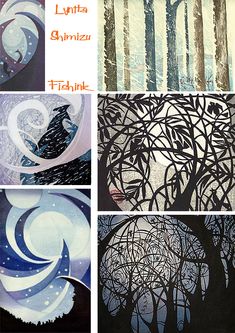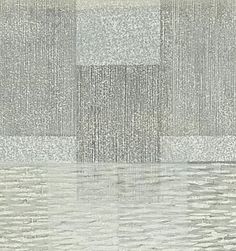

It is durable yet delicate and feels warm as though I am in nature. I love Japanese papers, particularly mulberry paper. Since I was young, I have tried to visualized imaginary worlds.įor the past 18 years, I have developed my own printing processes,Ĭombined with different methods, such as collage with painting, origami and layered washi. Abstraction, to me, is often more realistic than representation. I have concerned myself with landscape, both as abstraction and representational form. I have learned many lessons from my practice of Mokuhanga, not only techniques, but also, life lessons. And, as it is water based, using all natural materials, it doesn’t get messy like painting, and it carries no fumes. The best thing about Mokuhanga is that I don’t need a big studio or a printing press to make my work. After my daughter was born in 2005, feeling isolated and longing to make art, little by little I started to practice Mokuhanga at home, while my baby was sleeping. In 2004, I moved to Japan, without speaking the language, and with no family or friends for support. However, today, contemporary artists are doing all three processes by themselves. Carving wood blocks by a master carver 3. The process was separated in three parts 1. Ukiyo-e prints were beginning to be made around the 17th century during E-do period in Japan. I was overwhelmed to learn the process without any knowledge or experience.
#Moku hanga abstract professional#
During the residence, artists were taught by both a professional carver and printer from Kyoto. In 2003, I was invited to join an artist residency program in Nagasawa Art Park in Japan. I was enchanted by these print works, and I wanted to learn about the process of making them. It was love at first sight when I first saw an exhibition of Ukiyo-e prints when I went to the Ukiyo-e exhibition at the Brooklyn museum in 2000, while I was an MFA candidate at Pratt.


The very center of your heart is where life begins – the most beautiful place on earth. Her works have been exhibited and collected internationally, including a purchase award by the Hawaii state Foundation for culture and the Arts, Art in Public Places. and inclusion into the Kentler International Drawing Spaces Flatfiles. She was a 2003 participant in the Nagasawa Art Park Artist-in-Residence program, run by the Mokuhanga Innovation Laboratory, where she was introduced to Mokuhanga, a traditional print making process using water based ink on hand made Japanese paper. She received her BFA in Fine Arts from Hong-ik University, Seoul, Korea and her MFA in Painting from Pratt Institute School of Art in New York. If this data is unavailable or inaccurate and you own or represent this business, click here for more information on how you may be able to correct it.Mia O is a South Korean artist, currently living and working in Tokyo, Japan.

VIEW ADDITIONAL DATA Select from over 115 networks below to view available data about this business.


 0 kommentar(er)
0 kommentar(er)
